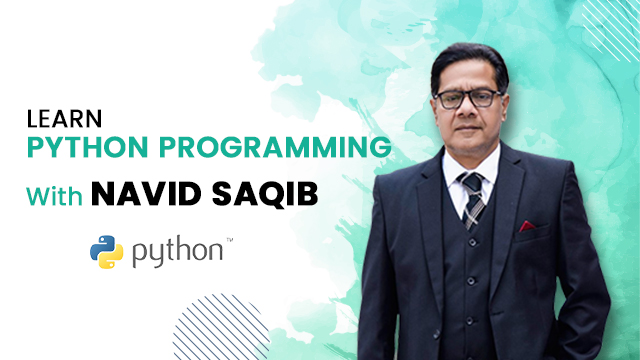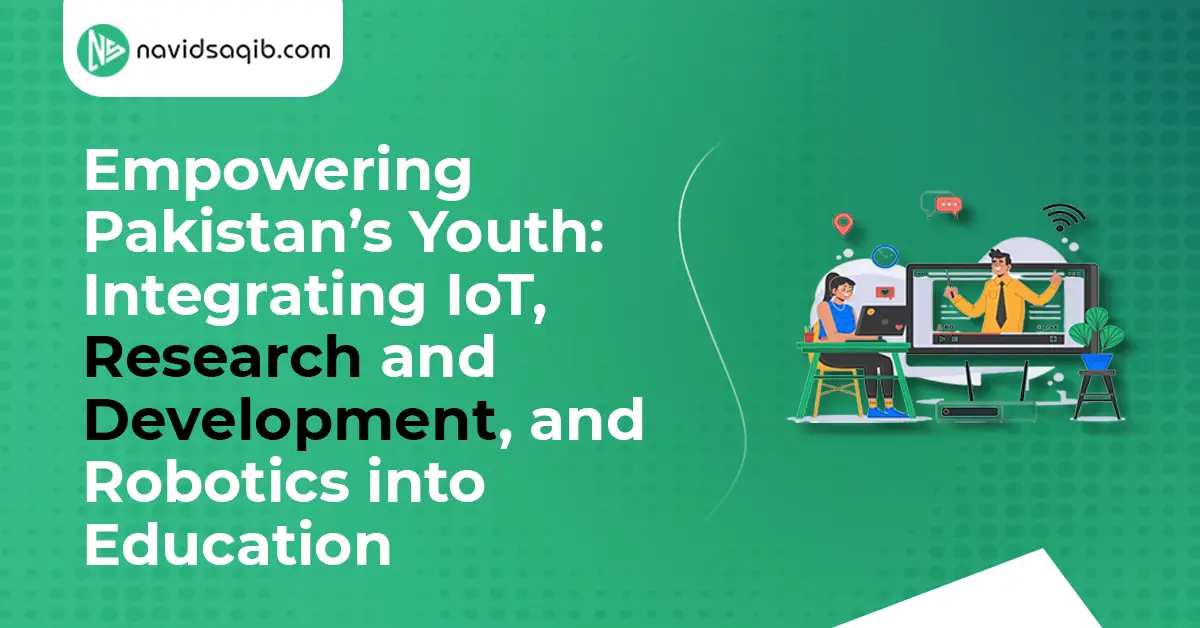Developing a new generation of innovators and entrepreneurs in the fast-paced world of today requires incorporating cutting-edge technology like robotics, R&D, and the Internet of Things (IoT) into the educational process.
The early adoption of these technologies has the potential to completely transform Pakistan’s educational system and economic prospects, a country with a youthful population and abundant potential.
This article explores the benefits of IoT, R&D, and robotics for Empowering Pakistan Youth and argues for educational reforms that will enable students to become innovators and problem solvers instead of just following conventional career pathways.
The Need for Technological Integration in Education
Technological integration in education is crucial for preparing students to thrive in an increasingly digital world. As technology reshapes industries and job markets, educational systems must evolve to equip learners with relevant skills.
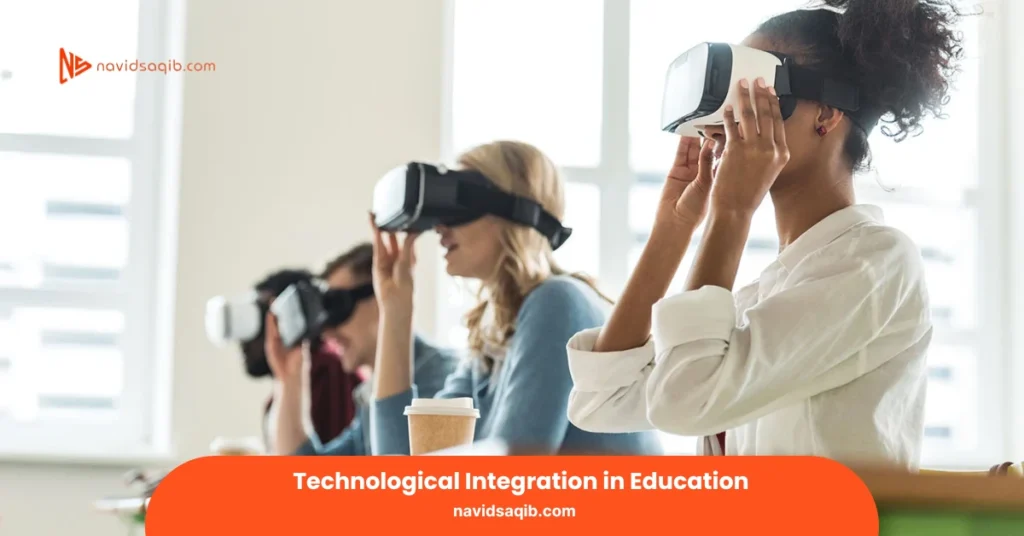
Teachers may create dynamic, interactive learning environments that promote cooperation, creativity, and critical thinking by integrating technology into the classroom. To satisfy the various needs of pupils, this integration also makes tailored learning experiences possible.
Ultimately, embracing technology in education ensures that students are not only consumers of information but also creators and innovators, ready to tackle future challenges.
1: The Changing Job Market
The job market is undergoing a rapid transformation driven by technological advancements and globalization. Traditional jobs are being redefined or replaced by roles that require a new set of skills, particularly in fields such as artificial intelligence, data analysis, and digital marketing.
As industries adapt to these changes, the demand for workers proficient in technology and innovation is growing. Moreover, many jobs that didn’t exist a decade ago are now among the most sought-after, emphasizing the need for continuous learning and adaptability.
The rise of remote work and the gig economy further highlights the importance of digital literacy, as workers need to navigate virtual platforms and manage freelance opportunities.
An essential part of preparing students for this dynamic labor market is the work of educational institutions. Schools may teach students how to utilize digital technologies successfully, promoting technical competency and problem-solving skills, by incorporating technology into their courses.
Education systems also need to promote soft skills like emotional intelligence, teamwork, and communication because these are still important in a modern tech-driven society. Students need to be prepared with both the hard and soft skills required to excel in a variety of rapidly changing professional situations, as the labor market continues to change.
2: Bridging the Skills Gap
The skills gap refers to the disconnect between the skills employers need and the skills that job seekers possess. As technology advances, this gap is widening, particularly in industries that require specialized knowledge in areas like coding, cybersecurity, and data science.
Employers often struggle to find candidates with the technical expertise needed to fill critical roles, leading to unfilled positions and stunted growth. This gap is not only a challenge for businesses but also for workers who may find their skills outdated and their job prospects limited.
To bridge this gap, educational institutions must take proactive steps to align their curricula with industry demands. This involves collaborating with businesses to understand the specific skills required in the workforce and incorporating these into teaching programs.
Universities and colleges should also stress the value of lifelong learning and encourage students to keep up with current developments in both knowledge and skills.
Students who have hands-on projects and internships can apply what they have learned in real-world settings, which increases their employability.
Furthermore, for those wishing to reskill or upskill, programs like online courses, coding boot camps, and vocational training may provide other possibilities.
We can close the skills gap and guarantee that workers have the expertise to meet the demands of the contemporary workforce by increasing the responsiveness of education to business needs.
IoT: A Gateway to Innovation
The Internet of Things (IoT) is revolutionizing the way we interact with technology, connecting devices and systems to create smarter, more efficient environments.
As IoT continues to permeate various industries, early exposure to this technology is becoming increasingly important for students.
Understanding IoT, integrating it into educational curricula, and providing hands-on learning opportunities can significantly enhance students’ problem-solving, technical, and creative skills.
1: Understanding IoT
The Internet of Things (IoT) refers to the network of physical objects—devices, vehicles, appliances, and more—that are embedded with sensors, software, and other technologies to connect and exchange data with other devices and systems over the internet.
These interconnected devices can communicate with each other, collect and share data, and make decisions autonomously, enabling a more responsive and efficient world.
IoT is the backbone of smart homes, smart cities, and even smart industries, where devices work together to improve processes, enhance safety, and create new opportunities for innovation.
2: Early Exposure to IoT
Early exposure to IoT can be a game-changer for students, opening doors to innovative thinking and equipping them with the skills needed for the future job market.
Here are three key ways to provide this exposure:
- Curriculum Integration
For students to gain a basic knowledge of IoT and its potential applications, this technology must be incorporated into the curriculum. IoT principles can be studied at schools and universities through courses in technology, engineering, and computer science.
Educators can make sure that students are not just aware of this technology but also appreciate its practical ramifications by incorporating IoT themes into the curriculum. Education in the sector can provide students with a thorough understanding by covering topics including sensor technology, data analytics, network communication, and IoT security.
- Hands-On Learning
Students must have real-world experience to properly understand IoT ideas. Building IoT projects is one kind of hands-on learning that can greatly improve students’ comprehension. Students can work with sensors, microcontrollers, and software platforms to design their own IoT solutions in IoT laboratories that can be set up in schools.
These projects, which can include building an automated agricultural system, a smart home system, or a health monitoring tool, enable students to put their academic understanding of technology into practice while also gaining real-world experience.
- Collaborations
Students’ exposure to IoT can be further enhanced through partnerships with IT companies, universities, and industry partners. These collaborations may give access to the newest IoT tools, resources, and know-how.
Students may be able to participate in workshops, internships, and mentorship programs through industry partnerships, where they will be able to learn from experts and obtain knowledge about practical IoT applications.
Students can prepare for future professions in the IoT industry by developing their communication and cooperation skills through collaborative projects.
3: Benefits for Students
Exposure to IoT at an early stage offers numerous benefits for students, setting the stage for personal and professional growth.
Here are three key benefits:
- Develop Problem-Solving Skills
IoT projects often involve complex challenges that require creative problem-solving. Students working on IoT solutions must identify problems, analyze data, and develop innovative approaches to address them.
This process helps students to enhance their critical thinking and analytical skills, enabling them to tackle complex issues not only in technology but in various aspects of life. The ability to approach problems from different angles and come up with effective solutions is a valuable skill that will serve students well in their future careers.
- Enhance Technical Skills
Working with IoT technology allows students to develop a range of technical skills, including programming, electronics, data analysis, and network management.
Professionals with IoT and related field experience are in high demand in today’s work market, therefore these abilities are highly relevant.
Whether students want to work in technology, engineering, or any other IoT-related sector, they can develop a solid technical foundation that will offer them a competitive advantage in their future jobs by getting hands-on experience with IoT devices and systems.
- Foster Creativity
IoT is a field that thrives on innovation and creativity. As students explore the possibilities of IoT, they are encouraged to think outside the box and come up with novel solutions to real-world problems.
Whether it’s designing a new smart device or developing a unique application for existing technology, IoT projects provide ample opportunities for creative expression.
This creativity is not limited to the technical aspects of IoT; it also extends to how students approach problem-solving, design user experiences, and envision the future of technology.
Research and Development: Cultivating a Culture of Innovation
Research and Development (R&D) plays a pivotal role in nurturing innovation across industries. By fostering an environment where creativity and critical thinking are prioritized, R&D becomes the backbone of advancements in technology, science, and various other fields.
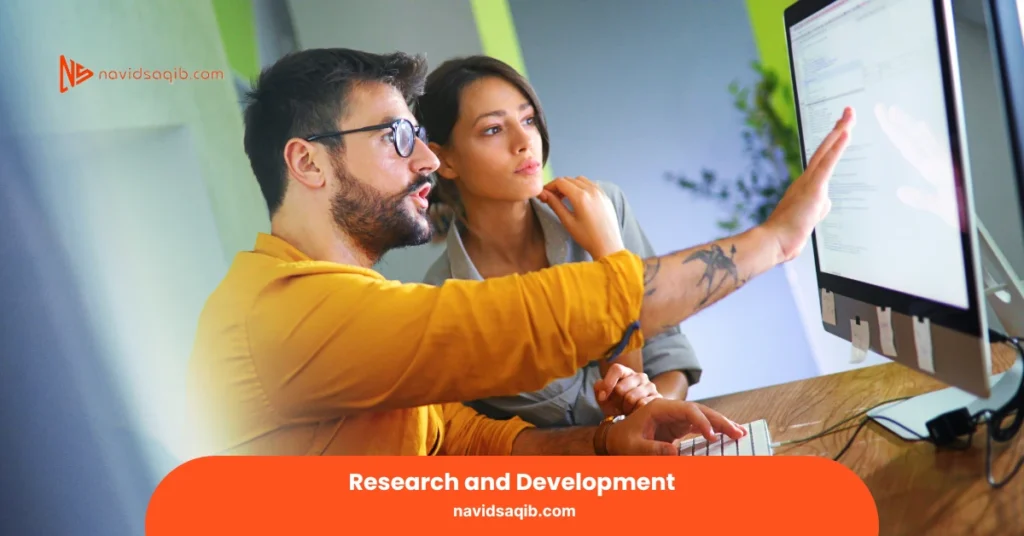
Cultivating a culture of innovation through R&D in educational settings, especially in schools, is essential for preparing students to face future challenges with confidence and skill.
Here’s how R&D can be effectively integrated into education and the benefits it offers to students.
1: The Role of R&D
Research and Development (R&D) is critical for technological advancement and economic growth. R&D activities involve investigating new technologies, improving existing products, and developing innovative solutions. For Pakistani students, engaging in R&D can provide:
- Hands-On Experience: R&D provides students with the opportunity to engage in hands-on experiences that are vital for understanding complex concepts. Instead of merely learning through textbooks, students get to apply theories in real-world situations, which enhances their comprehension and retention of knowledge. This practical approach bridges the gap between academic learning and practical application, allowing students to gain valuable experience that prepares them for future careers.
- Critical Thinking: Involvement in R&D encourages critical thinking by challenging students to solve problems creatively. Through research projects, students learn to analyze data, question existing theories, and develop innovative solutions. This process nurtures a mindset that is not only inquisitive but also resilient in the face of obstacles. Critical thinking is a crucial skill in today’s rapidly changing world, and R&D helps students cultivate this ability from an early age.
- Industry Exposure: R&D activities often involve collaborations with industry professionals, providing students with exposure to real-world industry practices. This interaction helps them understand the practical implications of their academic knowledge and the current trends in their field of interest. Industry exposure through R&D projects equips students with insights into potential career paths and the skills required to succeed in various industries.
2: Implementing R&D in Schools
To integrate R&D into the educational system, the following steps can be taken:
- Project-Based Learning: One of the most effective ways to incorporate R&D in schools is through project-based learning (PBL). PBL allows students to work on projects that require them to conduct research, experiment with ideas, and present their findings. This method encourages self-directed learning, as students take ownership of their projects, from inception to completion. PBL not only enhances research skills but also fosters creativity and collaboration among students.
- Innovation Labs: Establishing innovation labs in schools can serve as a hub for R&D activities. These labs provide a dedicated space where students can explore new ideas, experiment with different technologies, and develop prototypes. Innovation labs are often equipped with tools like 3D printers, coding software, and robotics kits, enabling students to turn their ideas into tangible products. Such environments inspire students to think beyond the classroom and push the boundaries of what is possible.
- Partnerships: Forming partnerships with universities, research institutions, and industries can significantly enhance the R&D capabilities of schools. These partnerships can provide students with access to advanced research facilities, mentorship from experts, and opportunities to participate in real-world research projects. Collaborating with external partners also helps schools stay updated with the latest developments in various fields, ensuring that students receive a cutting-edge education.
3: Advantages for Students
Engaging in R&D from an early age helps students:
- Build Research Skills: Involvement in R&D activities equip students with essential research skills, such as data collection, analysis, and interpretation. These skills are invaluable not only in academic pursuits but also in various professional fields. By engaging in research, students learn how to approach problems methodically, evaluate evidence critically, and present their findings effectively.
- Enhance Collaboration: R&D projects often require teamwork, as students work together to solve complex problems. This collaborative approach helps students develop communication and interpersonal skills, which are crucial for success in any field. Working in teams also teaches students the importance of diverse perspectives and the value of collective effort in achieving common goals.
- Prepare for Higher Education: Participating in R&D activities prepares students for the rigors of higher education. Research projects at the school level give students a head starts in understanding the research process, which is a significant component of most university programs. Additionally, the critical thinking and problem-solving skills developed through R&D make students better equipped to tackle advanced studies and research projects in higher education.
One effective strategy for fostering an innovative culture in the classroom is to include research and development (R&D) in the curriculum. R&D equips students with the problems of the future by giving them practical experience, promoting critical thinking, and exposing them to the business world.
Enhancing students’ research skills, promoting collaboration, and preparing them for higher education are all done by implementing R&D through project-based learning, innovation laboratories, and partnerships.
Research and development in schools create the groundwork for a new generation of creative problem solvers and thinkers who will propel advances in a variety of disciplines in the future.
Robotics: Shaping the Future Workforce
Robotics is rapidly transforming industries and everyday life, making it a crucial element in shaping the future workforce.
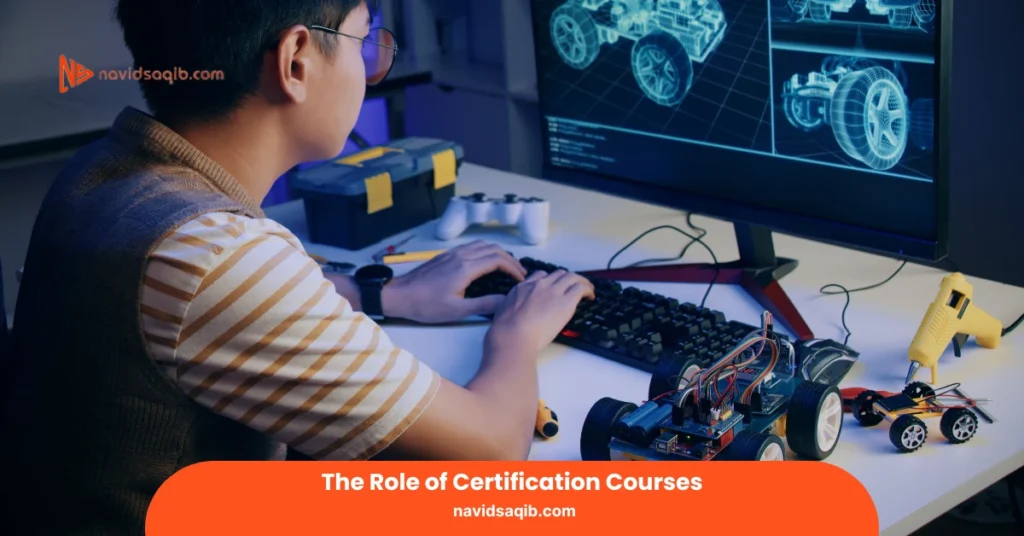
As automation and artificial intelligence (AI) become increasingly prevalent, understanding and working with robots is no longer a niche skill—it’s essential.
Robotics isn’t just about creating machines; it’s about preparing the next generation to thrive in a world where technology plays a central role in almost every job.
1: The Importance of Robotics
The importance of robotics in the modern world cannot be overstated. As industries evolve, robots are becoming integral to various sectors, from manufacturing and healthcare to agriculture and entertainment.
They perform tasks that are dangerous, repetitive, or require precision beyond human capabilities, increasing efficiency and safety. Furthermore, the rise of smart robots and AI-driven systems is creating new job roles that require advanced technical skills, making robotics knowledge a key asset in the job market.
Robotics also drives innovation, opening new avenues for creative problem-solving. As businesses look for ways to stay competitive, those who can design, build, and maintain robotic systems will be in high demand.
Understanding robotics today means being prepared for the jobs of tomorrow, where technology and human collaboration will be vital.
2: Introducing Robotics in Education
One of the best ways to prepare students for their future careers is to incorporate robotics into their education. By introducing robots at an early age, we can provide children with the skills and knowledge they need to excel in a technology-driven environment.
Here’s how robotics can be integrated into the educational landscape:
- Robotics Clubs and Competitions
Robotics clubs and competitions are fantastic platforms for students to engage with robotics outside the traditional classroom setting. These clubs allow students to collaborate, design, and build robots, applying theoretical knowledge in a practical, hands-on environment.
Competitions, such as FIRST Robotics or VEX Robotics, challenge students to solve complex problems, fostering teamwork, creativity, and perseverance. These experiences not only build technical skills but also teach valuable life lessons like resilience and sportsmanship.
- Curriculum Integration
Integrating robotics into the curriculum is another powerful approach. Schools can incorporate robotics into subjects like mathematics, physics, and computer science, allowing students to see the real-world applications of what they learn in the classroom.
For example, learning about angles and measurements in math class can be directly applied when programming a robot to navigate an obstacle course. This integration helps demystify abstract concepts, making learning more engaging and relevant.
- Educational Kits
Students can construct and program their robots with the help of educational kits like Raspberry Pi, Arduino, and LEGO Mindstorms. Because of their user-friendly design, these kits are available to students of all ages.
With the help of these kits, kids can explore in a safe setting, make errors, and grow from them. This practical method is essential for cultivating a love of technology and gaining a thorough understanding of robotics.
3: Benefits for Students
Introducing robotics in education offers numerous benefits for students, extending beyond just technical skills.
Here are some key advantages:
- Develop Technical Skills
Learning robotics allows students to develop a wide range of technical skills, including programming, electronics, and mechanical engineering. These skills are not only valuable for careers in robotics and automation but are also transferable to other fields like software development, data analysis, and even design. Through mastering these skills early, students position themselves as strong candidates for future job opportunities in tech-driven industries.
- Encourage Innovation
Robotics education encourages students to think creatively and innovate. Building and programming robots requires problem-solving, critical thinking, and the ability to approach challenges from different angles. These are essential skills in any field, especially in today’s fast-paced, ever-changing world. Engaging with robotics, students learn to innovate and develop solutions that can have a real impact on society.
- Prepare for Future Careers
As automation and AI continue to evolve, the demand for professionals skilled in robotics will only increase. Learning robotics, students are preparing themselves for a wide range of future careers, from robotics engineering and AI development to roles in industries like healthcare, automotive, and aerospace.
These careers not only offer exciting challenges but are also likely to be among the most in-demand and well-paying jobs in the future.
As technology reshapes the world, those equipped with robotics skills will be the architects of the future.
Whether through school programs, clubs, or self-directed learning, students today have the opportunity to prepare themselves for the exciting challenges and opportunities that lie ahead in a world driven by innovation and automation.
Educational Reform
The education system in Pakistan faces critical challenges, necessitating urgent reforms. These reforms are essential to equip students with the skills and knowledge required for the modern world.
A comprehensive strategy that addresses technological integration, entrepreneurial focus, and public-private collaboration is needed to transform Pakistan’s educational landscape into one that fosters innovation, critical thinking, and sustainable development.
1: Current Educational Landscape in Pakistan
The current educational landscape in Pakistan is marked by significant disparities and challenges. While there have been efforts to improve access to education, many systemic issues persist.
The quality of education varies widely between urban and rural areas, with rural regions often lacking basic infrastructure and qualified teachers. Public schools, which serve the majority of students, are frequently underfunded and overcrowded, leading to subpar educational outcomes.
Additionally, the curriculum in many schools remains outdated, with a focus on rote memorization rather than critical thinking and problem-solving. This has resulted in a gap between the skills students acquire and the demands of the modern workforce.
Private schools, although providing better resources, are often too expensive for the average Pakistani family, leading to further inequalities in educational opportunities.
The lack of emphasis on vocational training and entrepreneurship means that students are often ill-prepared for the realities of the job market, contributing to high unemployment rates among young people.
Educational reform is not just necessary but urgent to ensure that future generations can thrive in an increasingly competitive global economy.
2: Recommendations for Reform
A: Early Integration of Technology
Integrating IoT, R&D, and Robotics into the curriculum from the 5th grade ensures that students gain practical experience and develop relevant skills early on. This can be achieved through:
- Curriculum Overhaul: The curriculum needs a complete overhaul to incorporate the latest technological advancements. Integrating subjects like coding, artificial intelligence, and data science from an early age will equip students with critical skills needed for future job markets.
- Teacher Training: Teachers should be provided with continuous professional development opportunities to stay updated with the latest educational technologies. Training programs focused on digital literacy and innovative teaching methods can enhance the quality of education.
- Infrastructure Development: Investment in modern infrastructure, including internet access and digital classrooms, is crucial. Ensuring that every school, especially in rural areas, has the necessary technological tools is key to bridging the digital divide.
B: Focus on Entrepreneurship
Encouraging entrepreneurial thinking and skills development can transform students into innovators and business leaders. This involves:
- Entrepreneurship Education: Embedding entrepreneurship education within the curriculum can inspire students to think creatively and develop an entrepreneurial mindset. This will foster innovation and self-reliance from a young age.
- Support for Startups: Providing support for student-led startups, including access to funding and mentorship, can encourage practical application of entrepreneurial skills. Incubation centers and innovation hubs in educational institutions can serve as platforms for young entrepreneurs to grow their ideas.
- Real-World Experience: Partnering with businesses to offer internships, apprenticeships, and hands-on projects can provide students with real-world experience. This practical exposure is essential in preparing them for the challenges of the entrepreneurial landscape.
C: Public and Private Sector Collaboration
Reforming education requires collaboration between the public and private sectors:
- Government Initiatives: The government should take the lead in implementing educational reforms, setting clear policies, and providing the necessary resources. Initiatives like public-private partnerships can accelerate the pace of reform.
- Corporate Partnerships: Collaboration with the private sector can bring in additional resources, expertise, and innovation. Companies can contribute through corporate social responsibility (CSR) initiatives, funding, and providing real-world projects for students.
- Community Engagement: Involving the community in the educational reform process is essential for its success. Local stakeholders, including parents, educators, and civil society organizations, should actively participate in shaping and supporting reforms.
In Pakistan, educational reform is about more than just raising standards; it’s about changing the course of the country.
We can design an educational system that gives students the information and abilities they require for success in a world that is changing quickly by incorporating technology, promoting entrepreneurship, and encouraging cooperation between the public and private sectors.

Computer Science / IT Recorded Courses
for O – Level, As – level and A level Computer Science / IT Click below.
Conclusion
Pakistan’s education system may transform future generations if it incorporates IoT, R&D, and robotics at a young age. Accepting these technologies will provide Pakistani students the entrepreneurial spirit required to propel the country’s technological and economic development, in addition to the abilities required to flourish as inventors.
Early technological education, entrepreneurial training, and solid public-private partnerships should be strategically prioritized to create a population that is talented, visionary, and dynamic.
It is essential that our educational system changes in pace with Pakistan’s entry into an era characterized by innovation and technical breakthroughs.
By including these revolutionary components, we can make sure that our children become leaders who are ready to create, innovate, and prosper rather than simply participants in the global arena.
Let’s make a commitment to educational reform that gives our children the tools they need to create the future they deserve.
FAQs (Frequently Asked Questions)
What is the goal of integrating IoT, Research and Development, and Robotics into education for Pakistan’s youth?
The primary goal is to equip young Pakistanis with the necessary skills and knowledge to thrive in the 21st century. By incorporating IoT, R&D, and robotics into the curriculum, the initiative aims to foster innovation, critical thinking, and problem-solving abilities. This approach prepares students for the evolving job market, promotes entrepreneurship, and contributes to the country’s technological and economic growth.
How does the integration of IoT and Robotics benefit students in Pakistan?
Integrating IoT and robotics into education provides students with hands-on experience in emerging technologies. These fields encourage creativity, teamwork, and real-world application of theoretical knowledge. Students can develop practical skills in programming, automation, and data analysis, making them more competitive in both local and global job markets. Additionally, this exposure can inspire students to pursue careers in STEM fields.
What role does Research and Development (R&D) play in this educational initiative?
Research and Development (R&D) is crucial in nurturing a culture of inquiry and innovation among students. By engaging in R&D activities, students learn to approach problems methodically, test hypotheses, and develop solutions based on data and evidence. This experience is invaluable in fostering a mindset geared towards continuous learning and improvement, which is essential in rapidly evolving technological fields.
How can educators and schools implement IoT, R&D, and Robotics into their curriculum?
Educators can begin by incorporating basic concepts of IoT, R&D, and robotics into existing science, technology, engineering, and mathematics (STEM) courses. Schools can also establish dedicated labs or clubs where students can work on projects and collaborate on research. Professional development for teachers is essential, ensuring they have the knowledge and confidence to guide students in these areas. Partnering with industry experts and leveraging online resources can also enhance the learning experience.
What are the long-term benefits of this educational shift for Pakistan?
In the long term, integrating IoT, R&D, and robotics into education will create a highly skilled workforce capable of driving innovation and economic growth. This shift can position Pakistan as a leader in technology and engineering, attract investment, and create job opportunities. Moreover, it empowers the youth to address local and global challenges, contributing to sustainable development and national prosperity.

